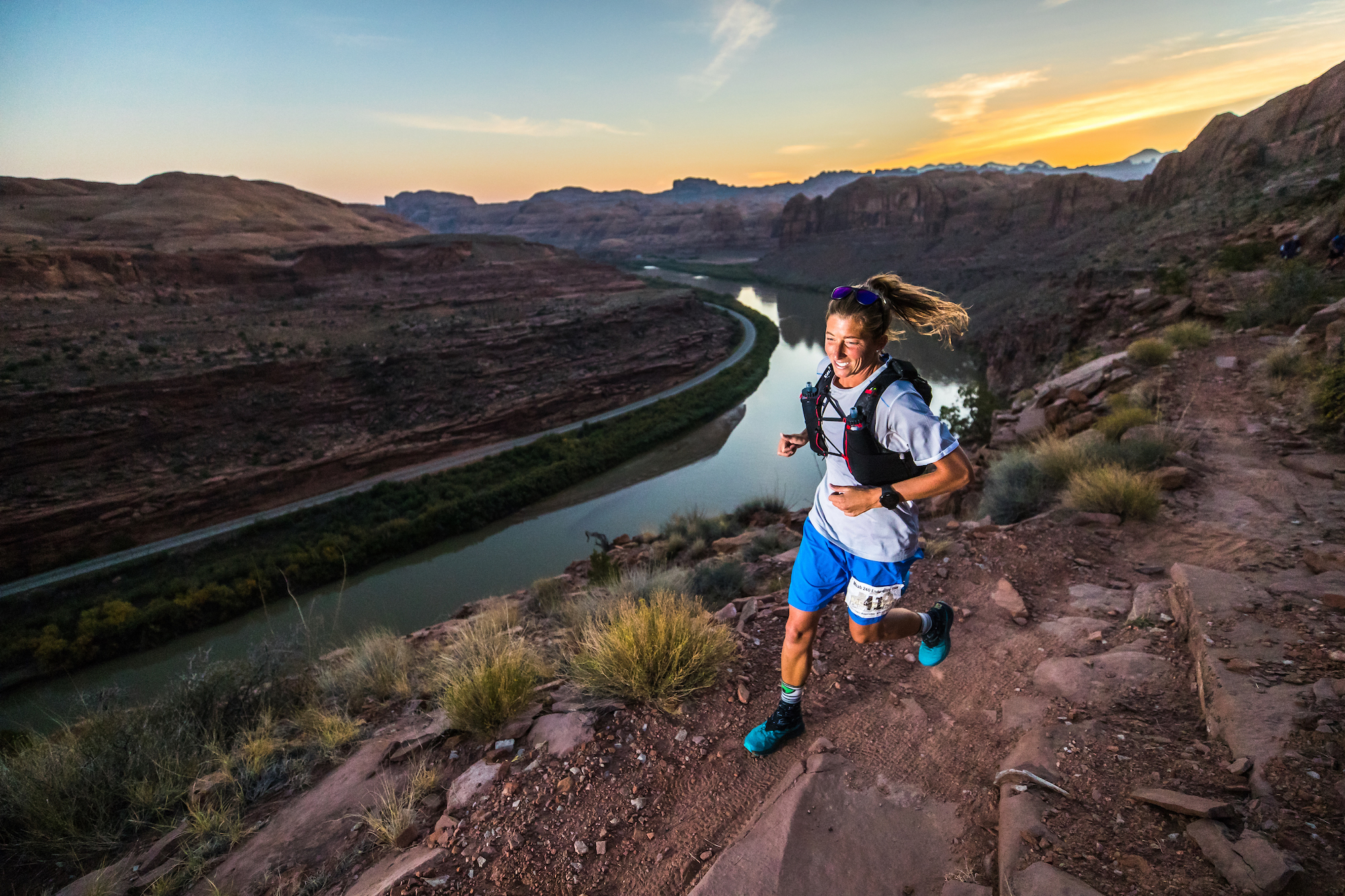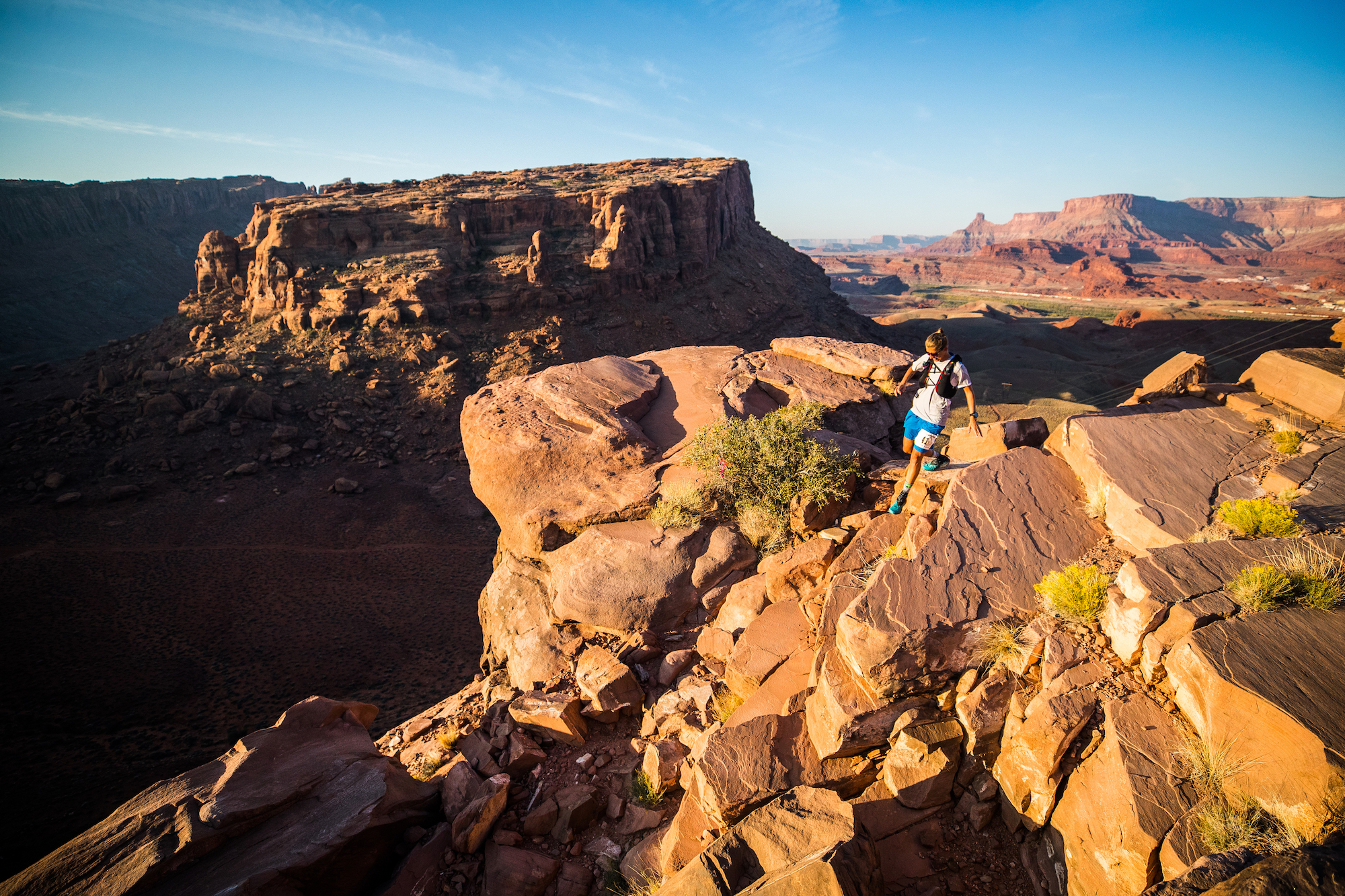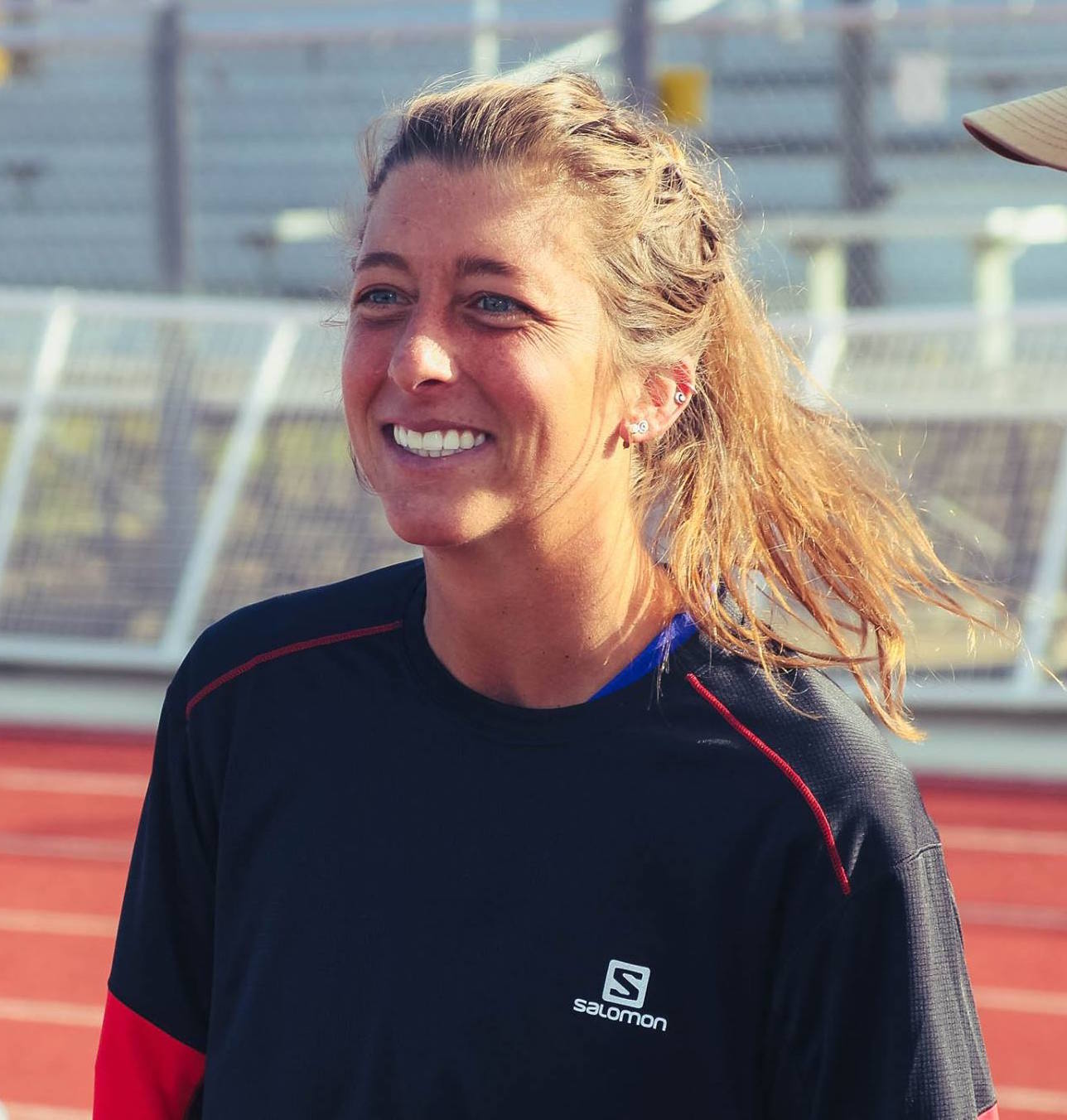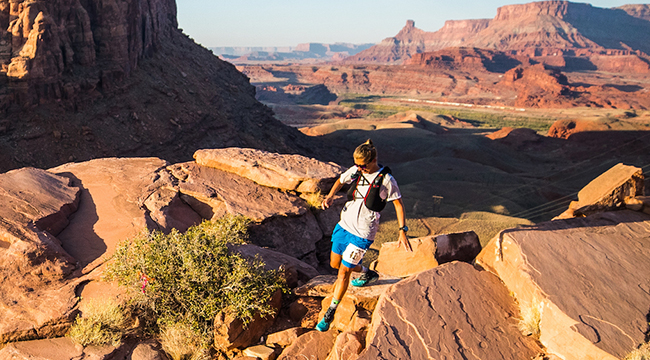
Courtney Dauwalter should be solving crimes while kicking ass and taking names on a Netflix show. By day, she’d lift up the city she loves with her good-hearted nature; by night, she’d run every inch of pavement to keep the residents safe. Her superpower wouldn’t just be her otherworldly endurance, but also her superhuman ability to convince others that with enough kindness and perseverance we can fix our fractured world.
Back in reality, Courtney Dauwalter may not be solving any crimes, but she is inspiring just about everyone she meets. Dauwalter is an ultramarathon runner who’s pushing the limits of the human body and our brain’s capacity for endurance. Through her running, she’s teaching all of us that we too can do the impossible.
Dauwalter has been running since her high school days back in Minnesota. After a move to Colorado to study and then teach science in middle school and high school, she got deeper and deeper into running as a sport in Colorado’s high altitudes. Eventually, she decided to take that love of running to the next level. Dauwalter left the world of teaching behind to focus solely on her running career. Marathons turned into 50k runs which turned into 50-mile runs. Then 100k. 100 miles. Then more. Last year, Dauwalter ran the Moab 240 Endurance Run. It’s a breathtaking race through Utah’s backcountry over mountains, through canyons, and across deserts.
She won that race. By a lot.
Dauwalter crossed the finish line ten hours before the next racer came in. To put that in marathon terms, she won the race by more time than it takes her to run two marathons. It was a feat that is hard to put into relatable terms — hence all “superhuman” preamble.
We sat down with Dauwalter to talk about how someone trains for running 240 miles over 55+ hours. And we were surprised to learn that one of the most elite athletes on the planet needs beer and quesadillas too. Sometimes even on the trail. We also found Dauwalter’s positivity downright infectious. She makes running the most accessible it’s ever been. You’ll want — maybe even need — to go out and run after reading her words.
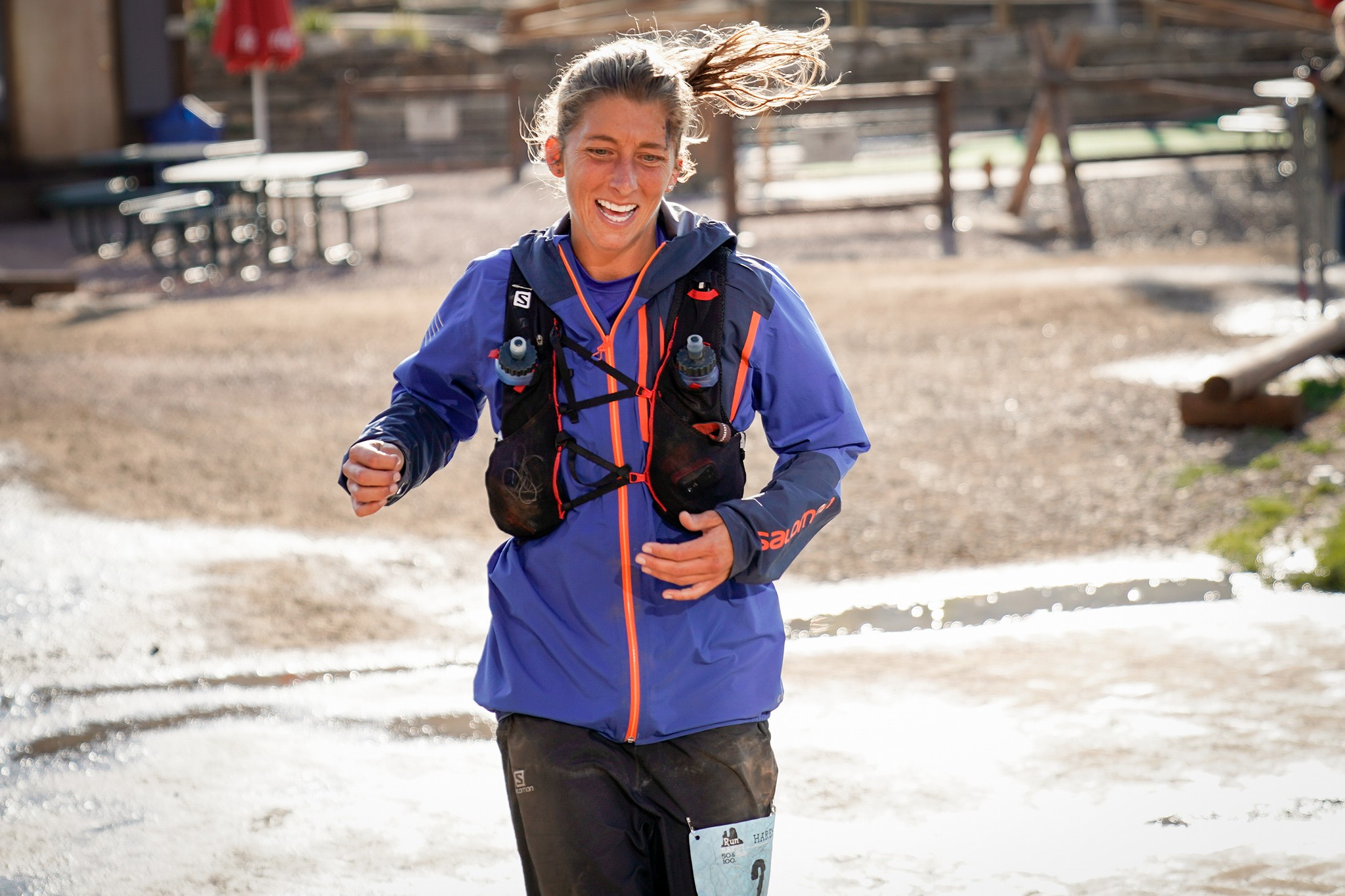
Let’s start with a basic question. What’s an “ultramarathon” and where do you run them?
Ultramarathons are running races that are any distance longer than a normal marathon of 26.2 miles. They can be on a trail, road, track, or a combination of surfaces. Typical distances are 50km, 50 miles, 100km, and 100 miles. But 200+ mile races are becoming more common! There is a whole other category of ultramarathons called “timed events” where runners do a short loop as many times as they can in a certain amount of time — 24 hours is the most common time frame for those races.
Okay, I’ve gotta ask, when you started running, did you have an inkling to be an ultramarathon runner? Or was it something that just kept snowballing as you run?
Haha, no! I didn’t know ultramarathons existed! I did a few road marathons and loved covering such a large distance with my feet. Once I found out there were races on really fun trails that were even longer, it all snowballed. Every time I finish a race or cover a new distance, I wonder ‘what’s next? What else is possible?’
When you talk to people who train for single marathons, a lot of the advice is to keep moving for the amount of time you need to run that race. An ultramarathon is an endurance race that can take 48 hours for some. How do you train for that? Are you running a marathon a day? Do you do strength training? Yoga? A martial art?
Training for ultramarathons has been pretty cool because there are so many different ideas and methods on what you should do to prepare your body to move for such an extreme amount of time. It’s great to get tips and advice from veteran ultrarunners, but each person has to find out what works for them.
What works for you?
I’m definitely still figuring it out. I focus on being consistent and getting out the door every day, plus occasionally putting in big days on my feet (4-6 hours of running) and racing pretty frequently. I use 50 mile and 100km races to help me train for the physical and mental aspects of running 100 miles. It’s nice to have a marked course, aid stations, and fellow racers out there for those really long training runs.
Why do you think what you’re doing works for you? Is it physiological? Psychological? All of the above?
Ultrarunning is absolutely physical and training your body for that is important. But I think the brain is even more important. Our brains are pretty amazing and when the physical pain sets in during an ultra — it always becomes physically painful! — it’s our brains that help us keep pushing.
I’ve been working on just becoming more comfortable with being uncomfortable and pushing through that physical pain. There is no trick to it (at least not that I know). For me, just continuing to put myself in long races where it will hurt and I will need to overcome that pain is how I’ve been training for the mental aspect.
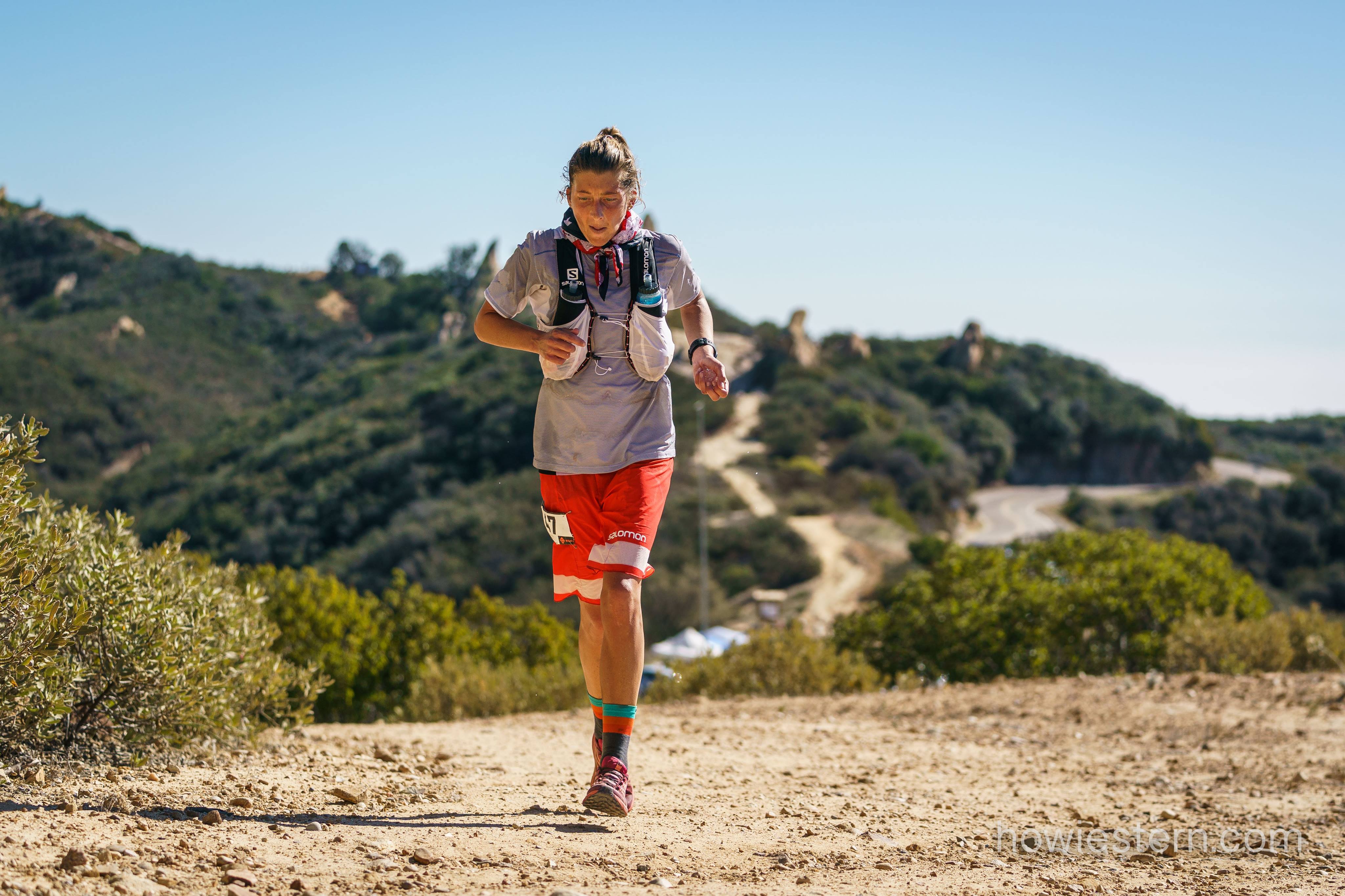
What role does nutrition play in your training regimen? Do you have any strict dietary restrictions or boosters?
I definitely don’t consider myself to be a model of healthy eating. I try really hard to just listen to my body and what it’s craving. If that is beer and a mountain of nachos, then that’s what it will be. If it’s salad, or candy, or scrambled eggs then there must be something in my body needing that. I also just want to enjoy life, which includes eating and drinking the things I love and not feeling bad about it.
How do you take in calories/fuel while you’re running for 20+ hours?
I have found some staples that work really well for me in ultramarathons. In a race shorter than 100km, I will rely solely on Honey Stinger and Tailwind. Honey Stinger makes waffles and chews that I take in throughout the race. Tailwind is a drink mix that I use in my hydration bottles for electrolytes and calories.
If the race is 100 miles or longer, mashed potatoes and quesadillas are added into the rotation of snacks. It took me a few years to narrow down the list of nutrition that I knew worked well for my stomach during races. And, this is definitely an individual thing where each person needs to find out what foods will sit well with them.
Let’s pivot a bit. One of the most amazing aspects about ultramarathons — besides the immense human feat, of course — is that you’re running in some of the most beautiful terrains. What are some of your favorite places to run?
Oh my gosh, such beautiful places. The Moab 240 Endurance Run gave us an incredible tour of canyons, desert, and mountains that I will never forget. I am based in Colorado, though, and it’s hard to beat a lot of the trails we have weaving around our mountains. I absolutely love running the trails around Steamboat Springs and Buena Vista, Colorado. I have yet to find places that I hate running — there’s always something positive you can find when you’re out enjoying a run.
How big is the ultramarathon community?
Big enough where you learn something new and meet a new, inspiring human at each event. Small enough where it feels like a family reunion every time you go to a race.
It sorta feels like it’s a rabble-rousing bunch of thrill seekers out there running these couple hundred mile races. How close is the community? Do you trade tips for fuel, training, cheer each other on? Do you see the same faces all over the world?
I like that description: Rabble-rousing! The community is one of the most welcoming, helpful, and generous communities I’ve ever experienced. Ultrarunners are always more than happy to trade tips and cheer for each other. One of the coolest parts of the ultrarunning world is that while it is an individual sport — it feels like you’re out there racing with all your teammates. Even out on course during a race, people are really helpful and encouraging of each other. The finish lines of these races are usually a big celebration of people sharing their race (and life) stories over coolers and campfires.
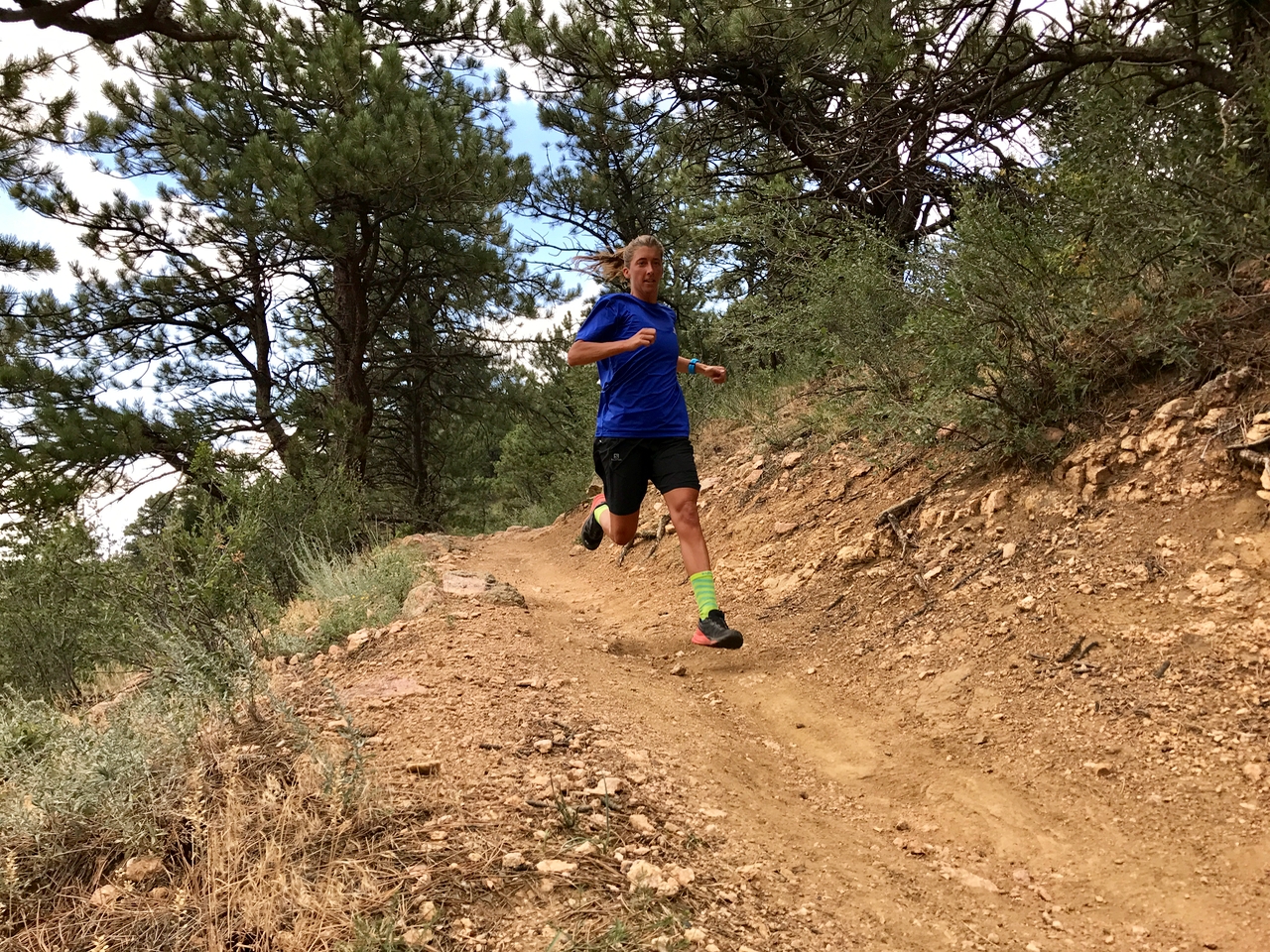
What do you learn about people out there on the trail for 238 miles?
What happens on the trails, stays on the trails! But really, people are incredible. The stories and paths people have taken in their lives to reach that race are always fascinating to hear. We are capable of overcoming so much in our lives. And we are capable of overcoming so much during an ultramarathon. I am really grateful to have met so many humans that remind me of what is possible when we set our minds to something.
What have you learned about you out there?
So much! I’ve learned that drinking caffeinated soda during a race will most likely make me throw up all over the trail. I’ve learned that the really weird things I’m seeing in the forest at night are probably not real (giraffes don’t live in the Colorado mountains and leopards don’t lounge on hammocks).
I’ve also learned that we should never give up on ourselves and that we absolutely can surprise ourselves. The first 100-mile race I tried I dropped out at about 60 miles because I didn’t believe I could finish the race. I have been learning from that race drop ever since.
What’s the worst moment you’ve had and how did you pull through?
I can think of a lot of moments that probably felt like the “worst moment” while they were happening. I’ve spent hours curled up on the side of a trail shivering and trying not to lay in my own vomit. I have had a perfectly warm and sunny race day turn into a hail storm, leaving us runners unprepared and bundling up in garbage bags. I’ve run the last 10 miles of a mountain100-mile race mostly blind from corneal edema, falling over every rock and root along the way because I couldn’t see my hand in front of my face, let alone the trail.
Ask any ultrarunner, though, and low moments are pretty common. Part of the lure of ultrarunning is the problem solving you have to do out on the trail, for problems you didn’t predict. Usually, my solution is to just keep going. Push through those low moments and come out the other side smiling again. Sometimes that will take hours, sometimes you bounce back in a few miles.
Do you think running ultramarathons are for everyone?
Definitely. With patience and persistence, everyone is capable of running an ultramarathon. It’s a pretty incredible feeling to move yourself with your feet for such a huge distance and I hope more people will give it a shot.
Where next? How far are you going to run?
2018 is shaping up to be pretty exciting! I am really intrigued by the longer ultramarathons, so I will do a few 100 mile races and another 200 mile race this year. I am also doing a “last person standing” race where there is no actual finish line — the race just goes until everyone but one person has dropped out. Last year the winner ran 245 miles before they were the last person standing! I am excited about the mental challenge of a race like that.
